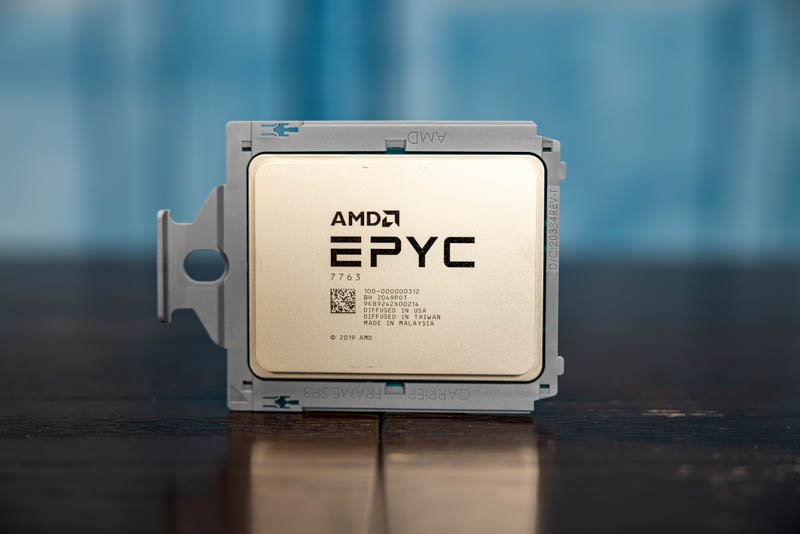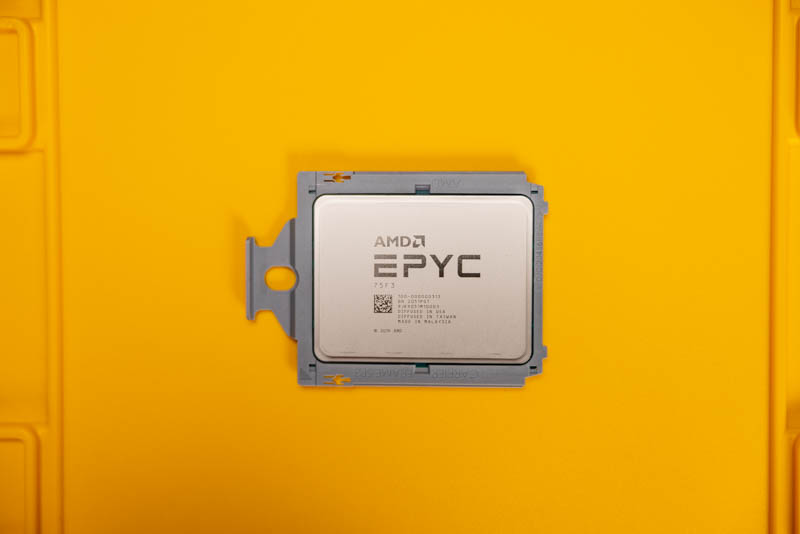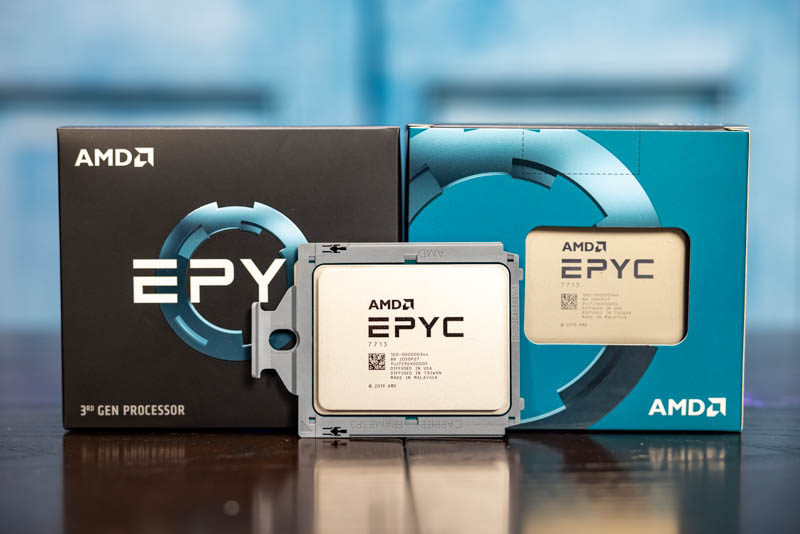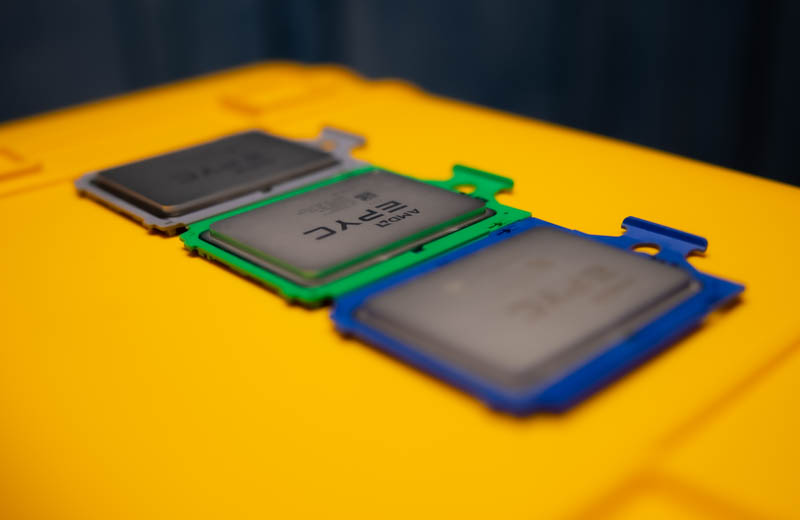2021 Server Platform Positioning
As we get through the launch cycles in 2021, we are going to end up with the following situation:
- 1P Market
- Intel will have bespoke offerings and single-socket only offerings to challenge AMD, but AMD will have the bigger 1P platform still. Intel will narrow but not close the gap.
- AMD will continue to have a strong 1x 2P Intel to 1x 1P AMD EPYC 7003 consolidation story.
- AMD does not have a low-cost and low-power offering to compete with 1P Xeon Bronze/low-end Xeon Silver, even with retaining lower power EPYC 7002 “Rome” SKUs.
- 2P Market
- Those shops who were only looking at AMD for the additional memory channels or PCIe Gen4 will not need to make the jump once Ice Lake Xeons hit the market.
- The mainstream market will become fiercely competitive with AMD v. Intel as both are able to hit an expanded range of core counts.
- AMD will have 4P to 2P and 2x 2P to 1x 2P consolidation stories.
- 4P Market
- Intel will still have Cooper Lake with 48x DDR4 channels, 192x PCIe lanes (albeit Gen3), and support for up to 18TB of memory.
- This is still a niche segment as consolidating 4x 2P to 2x 2P is often less attractive than 2x 2P to 1x 2P
While this may be a simple guide, it also will prove to be a good discussion piece for you and your colleagues in framing how 2021 will likely play out.
One must keep in mind that Ice Lake Xeons will see the entire platform retired with Sapphire Rapids and AMD will need to re-platform with Genoa (EPYC 7004?) as well. In the next generation, we get a host of new technologies including PCIe Gen5 and CXL so for all of the platforms we are looking at in 2021, there will be enormous upheaval in 2022/2023.
Final Words
The summary of Milan is fairly simple. We get higher performance per clock. We get more clock speed due to higher TDPs, which also increases power consumption. Much of the external platform connectivity is the same as the EPYC 7002 series. AMD effectively has no real low-end CPU in the EPYC 7003 series, so it needs to retain low-end EPYC 7002 CPUs to have a presence in that lower-cost/ power segment.

Were AMD is clearly set to play is in terms of performance. The EPYC 7763 is a massive jump in performance over the previous generation. Just due to launch timing it is hard for us to show 3rd Generation Intel Xeon Scalable Ice Lake single/ dual socket performance. At the higher-end we can see that AMD is competing with the 4-socket 3rd Gen Intel Xeon Scalable Cooper Lake’s top bin Xeon Platinum 8380H CPUs. It is showing that it can offer a consolidation path and at much lower power. Even in the 28-32 core range, the EPYC 75F3 is an ultra-fast 32-core offering that makes Cascade Lake processors simply look like slow low-power CPUs.

Still, we really did not touch on the heart of the competitive landscape for the AMD EPYC 7003 series. Putting this review together over the past few weeks, it has always felt like something is missing, or perhaps some things. The two glaring omissions are that we do not have Ice Lake Xeon performance, despite the fact that Intel has stated they are already shipping chips for revenue which means they will launch. The other omission is that we are really focused on high-end parts. By seeding only the high-end parts for reviews, AMD is hedging since it knows these parts will be faster than what Intel will offer.

The real competitive segment is not AMD’s 64-cores unless one is looking at a rack consolidation play. The real competitive segment is in the $1000-2000 CPU range where we expect that there will be intense competition.
Competition has been scarce in the server market. From the Xeon E5-2600 V1 Sandy Bridge series in 2012 to 2017 before the EPYC 7001 “Naples” line launched, we effectively had no competition in the market for Intel. The EPYC 7001 was a fine line of chips, but it was not a clear winner over Intel. In 2019, the market shifted, AMD had the clear performance and platform edge since Ice Lake fell into a cycle of delay.

2021 is set to bring competition to the market the likes of which we have not seen since the G34 Opteron days. Both Intel and AMD will have viable chips in the market, with ecosystem support, and on the same PCIe generation. We cannot wait to show our readers Ice Lake Xeons as that will usher in a new competitive era in the data center.
Looking ahead, the world is changing. As great as this competitive landscape is, in 2022/2023 is when entire architectures change. We will start to see the transition to PCIe Gen5. At first, that will bring features such as shared memory within systems as CXL goes from demos to deployment. Eventually, it will change how data center infrastructure is built and deployed. While a jump from 225W maximum for AMD to 280W in this generation may seem like a lot, in this article we showed a GPU platform already taking 400W-500W GPUs. TDP and power consumption is going up so not only will the architecture change, but the basic data center infrastructure will change as well.
While we do not yet know how the next-generations will fare, we are extremely excited for competition in the industry to be fierce and formidable. That competition leads to innovation that ultimately helps not just deploy better servers, but helps to better serve human progress.




Any reason why the 72F3 has such conservative clock speeds?
The 7443P looks as if it will become STH subscriber favorite. Testing those is hopefully prime objective :)? Speed, per core pricing, core count – there this CPU shines.
What are you trying to say with: “This is still a niche segment as consolidating 2x 2P to 1x 2P is often less attractive than 2x 2P to 1x 2P” ?
Have you heard co.s are actually thinking of EPYC for virtualization not just HPC? I’m seeing these more as HPC chips
I’d like to send appreciation for your lack of brevity. This is a great mix of architecture, performance but also market impact.
The 28 and 56 core CPUs are because of the 8-core CCXs allowing better harvesting of dies with only one dead core. Previously, you couldn’t have a 7-core die because then you would have an asymmetric CPU with one 4-core CCX and one 3-core CCX. You would have to disable 2 cores to keep the CCXs symmetric. Now with the 8-core CCXs you can disable one core per die and use the 7-core dies to make 28-core and 56-core CPUs.
CCD count per CPU may be: 2/4/8
Core count per CCD may be: 1/2/3/4/5/6/7/8
So in theory these core counts per CPU are possible: 2/4/6/8/10/12/14/16/20/24/28/32/40/48/56/64
I’m wondering if we’re going to see new Epyc Embedded solutions as well, these seem to be getting long in the tooth much like the Xeon-D.
Is there any difference between 7V13 and 7763?